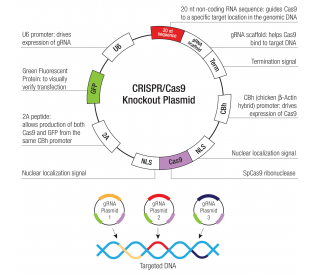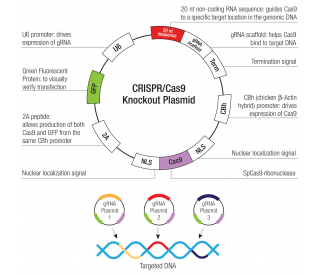详细说明
Purity
>97%, by SDS-PAGE visualized with Silver Staining and quantitative densitometry by Coomassie® Blue Staining.
Endotoxin Level
<0.10 EU per 1 μg of the protein by the LAL method.
Activity
Measured in a cell proliferation assay using HT‑2 mouse T cells. The ED 50 for this effect is 0.3‑1.5 ng/mL.
Source
E. coli-derived His23-Ser140, with an N-terminal Met
Accession #
N-terminal Sequence
AnalysisHis23
Predicted Molecular Mass
14 kDa
Carrier Free
What does CF mean?
CF stands for Carrier Free (CF). We typically add Bovine Serum Albumin (BSA) as a carrier protein to our recombinant proteins. Adding a carrier protein enhances protein stability, increases shelf-life, and allows the recombinant protein to be stored at a more dilute concentration. The carrier free version does not contain BSA.
What formulation is right for me?
In general, we advise purchasing the recombinant protein with BSA for use in cell or tissue culture, or as an ELISA standard. In contrast, the carrier free protein is recommended for applications, in which the presence of BSA could interfere.
404-ML |
| 404-ML/CF |
Formulation Lyophilized from a 0.2 μm filtered solution in PBS with BSA as a carrier protein. | Formulation Lyophilized from a 0.2 μm filtered solution in PBS. | |
Reconstitution Reconstitute at 100 μg/mL in sterile PBS containing at least 0.1% human or bovine serum albumin. | Reconstitution Reconstitute at 100 μg/mL in sterile PBS. | |
Shipping The product is shipped at ambient temperature. Upon receipt, store it immediately at the temperature recommended below. | Shipping The product is shipped at ambient temperature. Upon receipt, store it immediately at the temperature recommended below. | |
Stability & Storage: Use a manual defrost freezer and avoid repeated freeze-thaw cycles.
| Stability & Storage: Use a manual defrost freezer and avoid repeated freeze-thaw cycles.
|
Data Images
Bioactivity
| Recombinant Mouse IL-4 (Catalog # 404‑ML) stimulates cell proliferation of the HT‑2 mouse T cell line. The ED50 for this effect is 0.3-1.5 ng/mL. |
SDS-PAGE
| 1 μg/lane of Recombinant Mouse IL-4 was resolved with SDS-PAGE under reducing (R) conditions and visualized by silver staining, showing a single band at 12 kDa. |
Background: IL-4
Interleukin-4 (IL-4), also known as B cell-stimulatory factor-1, is a monomeric, approximately 13 kDa-18 kDa Th2 cytokine that shows pleiotropic effects during immune responses (1-4). It is a glycosylated polypeptide that contains three intrachain disulfide bridges and adopts a bundled four alpha -helix structure (5). Mouse IL-4 is synthesized with a 24 aa signal sequence. Mature mouse IL-4 shares 39%, 39%, and 59% aa sequence identity with bovine, human, and rat IL-4, respectively. Human, mouse, and rat IL-4 are species-specific in their activities (6-8). IL-4 exerts its effects through two receptor complexes (9, 10). The type I receptor, which is expressed on hematopoietic cells, is a heterodimer of the ligand binding IL-4 R alpha and the common gamma chain (a shared subunit of the receptors for IL-2, -7, -9, -15, and
-21). The type II receptor on nonhematopoietic cells consists of IL‑4 R alpha and IL‑13 R alpha 1. The type II receptor also transduces IL‑13 mediated signals. IL-4 is primarily expressed by Th2‑biased CD4+ T cells, mast cells, basophils, and eosinophils (1, 2). It promotes cell proliferation, survival, and immunoglobulin class switch to IgG1 and IgE in mouse B cells, acquisition of the Th2 phenotype by naïve CD4+ T cells, priming and chemotaxis of mast cells, eosinophils, and basophils, and the proliferation and activation of epithelial cells (11 ‑ 14). IL-4 plays a dominant role in the development of allergic inflammation and asthma (13, 15).
References:
Benczik, M. and S.L. Gaffen (2004) Immunol. Invest. 33:109.
Chomarat, P. and J. Banchereau (1998) Int. Rev. Immunol. 17:1.
Lee, F. et al. (1986) Proc. Natl. Acad. Sci. 83:2061.
Noma, Y. et al. (1986) Nature 319:640.
Redfield, C. et al. (1991) Biochemistry 30:11029.
Ramirez, F. et al. (1988) J. Immunol. Meth. 221:141.
Leitenberg, D. and T.L. Feldbush (1988) Cell. Immunol. 111:451.
Mosman, T.R. et al. (1987) J. Immunol. 138:1813.
Mueller, T.D. et al. (2002) Biochim. Biophys. Acta 1592:237.
Nelms, K. et al. (1999) Annu. Rev. Immunol. 17:701.
Paludan, S.R. (1998) Scand. J. Immunol. 48:459.
Corthay, A. (2006) Scand. J. Immunol. 64:93.
Ryan, J.J. et al. (2007) Crit. Rev. Immunol. 27:15.
Grone, A. (2002) Vet. Immunol. Immunopathol. 88:1.
Rosenberg, H.F. et al. (2007) J. Allergy Clin. Immunol. 119:1303.
Long Name:
Interleukin 4
Entrez Gene IDs:
3565 (Human); 16189 (Mouse); 287287 (Rat); 397225 (Porcine); 280824 (Bovine); 403785 (Canine); 574281 (Primate); 100302454 (Rabbit)
Alternate Names:
B cell growth factor 1; BCDF; B-cell stimulatory factor 1; BCGF1; BCGF-1; binetrakin; BSF1; BSF-1; IL4; IL-4; IL-4B_cell stimulatory factor 1; interleukin 4; interleukin-4; Lymphocyte stimulatory factor 1; MGC79402; pitrakinra







![Anti-CARD11 antibody [EPR2557] 100µl](https://yunshiji.oss-cn-shenzhen.aliyuncs.com/202407/25/ryuecwsu03m.jpg)
![Anti-CARD11 antibody [EPR2557] 40µl](https://yunshiji.oss-cn-shenzhen.aliyuncs.com/202407/25/0l4lvuuesv1.jpg)

![Anti-Caspase-9 antibody [E23] 100µl](https://yunshiji.oss-cn-shenzhen.aliyuncs.com/202407/25/3jnd4412gqi.jpg)

![Anti-CKS2 antibody [EPR7946(2)] 100µl](https://yunshiji.oss-cn-shenzhen.aliyuncs.com/202407/25/cfdt44gkqre.jpg)



 粤公网安备44196802000105号
粤公网安备44196802000105号